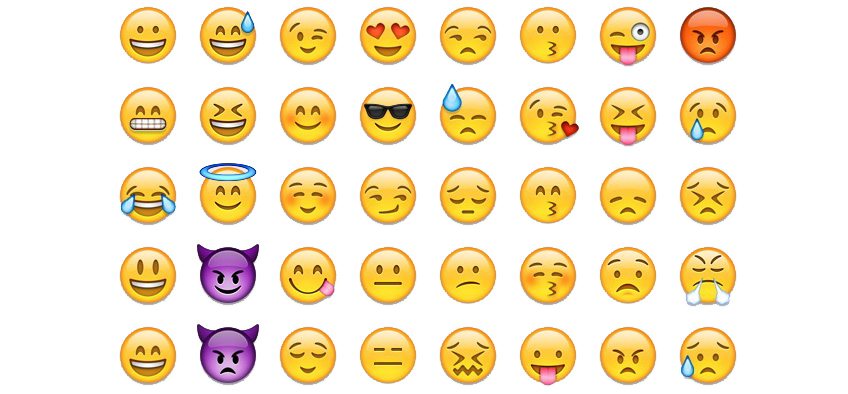Estimated reading time: 1 mins
Emoji – the name for the icons we use in emails, text messages and any other form of text-based communication to convey an emotion. But is there a place for them at work?
You know the ones:

Smilies are the best known to most of us – emoji helps us share how we feel in a few characters. The term emoji comes from Japan: the word emoji literally means picture (e) and character (moji).
There are hundreds we can use – some are obscure – and some you’ll see used liberally.
I use them all the time when texting my brothers or friends, and in Facebook updates. Where do you use them?
So is it OK to use them at work?
Depends on your workplace. And what your communication is for. There is nothing directly wrong or unprofessional about emoji, and there is no reason why emoji can’t be used in company email, per se.
Emoji can convey a meaning often lost in written words…
Please send me the list of ‘approved’ suppliers 🙂 – a smile, to say please
Please send me the list of ‘approved’ suppliers 😡 – do it now dammit!
Please send me the list of ‘approved’ suppliers 😉 – irony
Get my meaning? 💡
When you shouldn’t use emoji
There are situations where I suggest you don’t use emoji:
- If you are sending an email to an external person. Why? Because email messages are often messed about with as they move between email systems over the web. Your emoji could well turn out to look like strange characters and confuse people.
- If you are communicating formally. Why? Emoji is great for informal communication but I suggest you avoid it when making formal communications, unless you’re absolutely sure about your audience. Using emoji can make you appear cavalier and insincere.
- If you are not sure that the receiver will receive your emoji. Why? Let’s say I wrote you this: I am not happy about your behavior 😀 but you didn’t receive the emoji. You could interpret my communication very differently from my intended meaning!
Making sense? 😎
Organizations are less ‘stuffy’ about using communication tools like emoji. They’re accepted in most forms of communication, and they’re not just for kids. Just ensure that the people who are to receive your communications can receive them and understand them.
